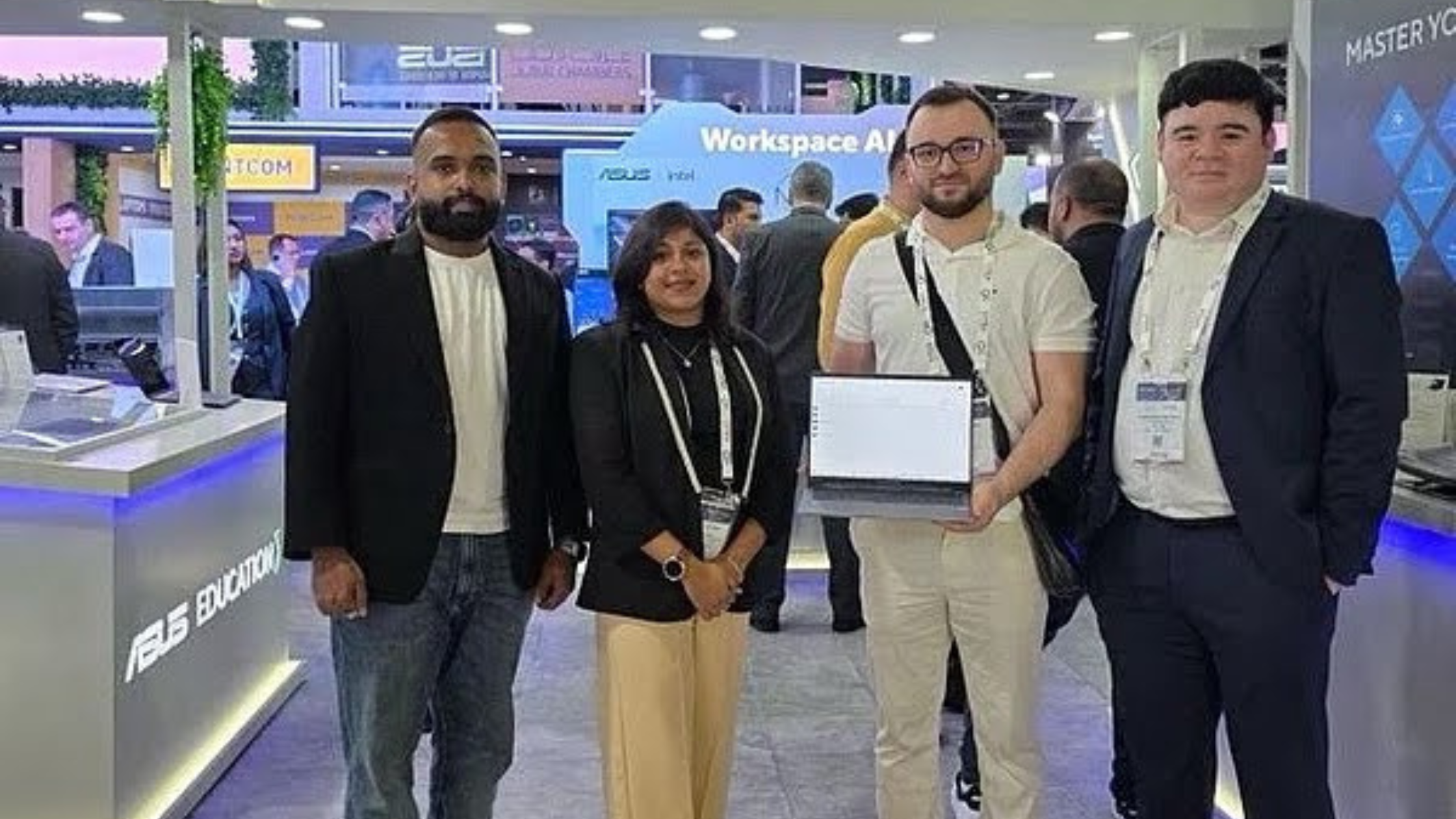Dubai’s Viral Robot Wows Crowds as New $6,000 Model Launches

A humanoid robot that recently waved to His Highness Sheikh Mohammed bin Rashid Al Maktoum, Vice-President and Prime Minister of the UAE and Ruler of Dubai, has become a social media sensation. The robot, called the Unitree G1, was spotted in several locations in Dubai crossing the street, running with people inside a shopping mall, and even greeting visitors at a public event.
Its public appearances have attracted huge attention, not just in the UAE but around the world. Now, the same company has launched a new model, the Unitree R1, which costs under USD 6,000. This is being described as the most affordable humanoid robot in the world.
The Robot That Caught Dubai’s Attention
The G1 first drew headlines when it appeared at a majlis in Dubai, waving to Sheikh Mohammed. Soon after, videos of it moving smoothly through public spaces began to spread online. In one clip, it crossed a road like a pedestrian. In another, it joined human runners in a “mallathon” event.
The robot’s lifelike movements, balance, and quick reactions impressed viewers. People described it as looking “almost human” in how it walked and interacted.
The G1 is built by Unitree Robotics, a China-based company known for advanced robots. In the Middle East, it is represented by Ednex Automation.
Strong Interest from Businesses and Institutions
Since the viral videos began circulating, Ednex Automation has received many enquiries from potential buyers in the region.
Athul Matheth, Regional Robotics and Automation Manager at Ednex, said they are hoping to turn at least 30 per cent of these enquiries into actual sales.
“The G1 is more than just a display robot,” Matheth said. “It can be programmed to help in real-life situations. For example, it can assist in grocery stores. It can pick up bags of fruit or vegetables, scan them, and send the cost to the checkout system.”
The G1 can also perform security checks at events and work in tough weather conditions. Some versions can even solve a Rubik’s cube or use tools like a power drill.
Inside the G1’s Technology
The Unitree G1 is a medium-cost humanoid designed for demonstrations, research, and training. It is smaller and less expensive than the company’s flagship H1 model but still offers advanced features.
Price: Around USD 16,000.
Movements: Walks, runs, and balances with precision.
Skills: Can manipulate objects, perform programmed tasks, and recognise people.
Technology: Uses AI for both visual and audio recognition.
Its public appearances in Dubai have shown that robots can operate smoothly outside laboratories and interact with people in real situations.
The R1: Humanoid Robotics for More People
Following the buzz created by the G1, Unitree has now launched the R1. At about USD 5,900, it is currently the cheapest humanoid robot available for purchase worldwide.
The R1 is smaller and lighter than the G1, but it is built to be fast and flexible. It stands about 121 cm tall and weighs 25 kg. It has 26 movable joints, giving it the ability to perform athletic movements like cartwheels and quick turns.
R1 also comes with built-in AI that can process both voice and images. This allows it to respond to spoken commands and recognise objects and people. The R1 has cameras, microphones, and speakers, plus an 8-core CPU and GPU.
One limitation is that it has fixed hands shaped like fists, which means it cannot pick up small objects. However, its design makes it ideal for research, training, and public engagement.
A Shift in the Robotics Market
Humanoid robots have long been expensive, often costing more than USD 200,000. The R1’s price is a huge drop from that level, making it possible for universities, startups, and even hobbyists to afford one.
Experts say this price drop will help smaller companies and research groups create new software and uses for humanoid robots. It also puts pressure on other robotics companies, such as Tesla and Figure AI, to reduce their prices.
The R1’s affordability is partly due to Unitree’s ability to make most of its parts in-house in China, reducing production costs.
Opportunities for the UAE and the Middle East
The UAE has been investing heavily in technology and smart solutions. The country already uses AI in transport, healthcare, and government services. Robots like the G1 and R1 could find roles in many areas, such as:
Event Assistance: Greeting guests, giving directions, and providing live updates.
Retail Support: Helping customers in stores, scanning items, and restocking shelves.
Security: Monitoring events and identifying possible risks.
With its focus on innovation, the UAE is well placed to become an early adopter of humanoid robotics. Public interest, as seen from the G1’s appearances, shows that people are curious and open to interacting with robots.
From Public Display to Everyday Use
The G1’s viral moments were more than just entertainment. They showed that robots can work in everyday public settings, not just in controlled environments.
The launch of the R1 now opens the door for many more organisations to test and use humanoid robots. While there are still limits such as short battery life and restricted hand function the pace of development is fast.
Industry experts believe the global humanoid robot market could be worth over USD 200 billion by 2035. Areas like logistics, retail, security, and even education are expected to adopt these machines in the coming years.
For the UAE, adopting such technologies could enhance services, attract investment, and position the country as a hub for robotics in the Middle East.







